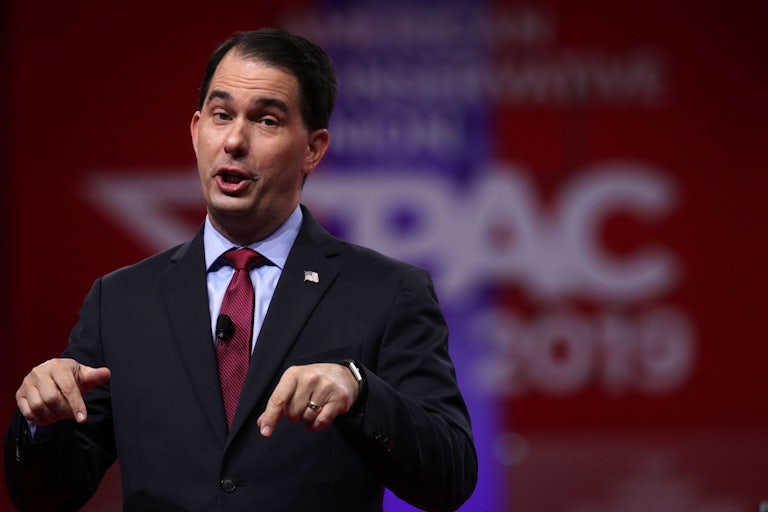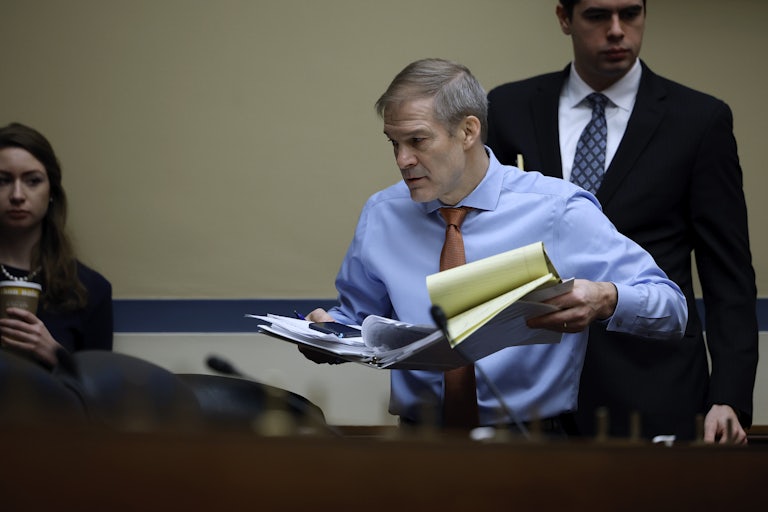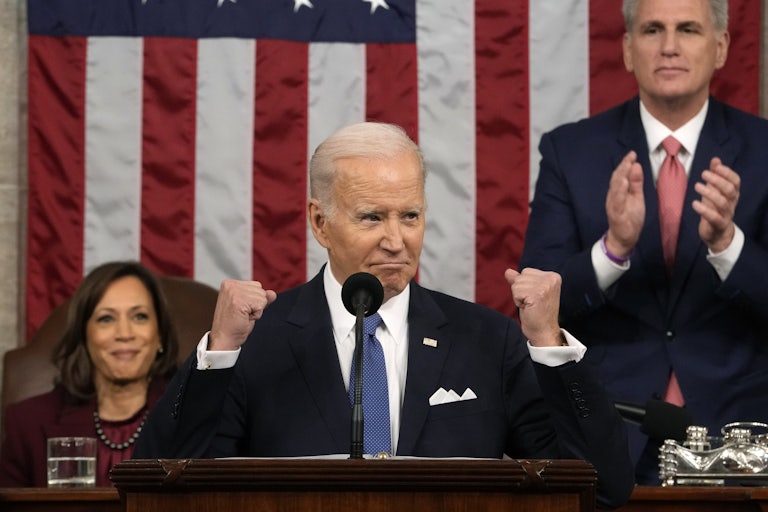The Republicans Would Have Booted Dianne Feinstein by Now
President Biden’s agenda will be imperiled unless Democrats summon the courage to end this madness.

This week an astute Twitter user reminded me of an interesting fact from our recent political history. In early January 2018, Democrat Doug Jones, the winner of a special election in Alabama some weeks prior, joined the U.S. Senate. This took the then Republican majority to a tight 51–49 margin—a majority that was all the more fragile by dint of the fact that one of their own, Mississippi Senator Thad Cochran, was in extremely poor health. An October 2017 article from Politico described the lawmaker as “frail and disoriented” and recounted one incident in which the senator got lost on the way to the Senate chamber and another in which he voted the wrong way. It also reported that the senator was determined to stay in office. “Don’t believe everything you hear,” Cochran quipped when asked about retirement rumors. Nevertheless, by April Fools’ Day of 2018, he’d been shown the door.
The Democrats find themselves in a similar jam today: clinging to a razor-thin majority, with one member in poor health yet refusing to retire from her position (one that, extant reports suggest, she only sporadically remembers that she even holds). But in the case of California Senator Dianne Feinstein, while calls for her retirement are coming from inside the House (of Representatives), Democratic leaders in the Senate do not yet seem to have the stomach to force her out. Their timidity is putting President Joe Biden’s agenda at risk.
They are also risking their credibility. On April 12, Politico reported that while Democrats were growing increasingly concerned that Feinstein’s bout with shingles might be severe enough to close off any possibility of her return to action, the California senator floated the idea of having a temporary replacement fill her seat on the powerful committees on which she sits (most importantly, the Judiciary Committee). It was a request that Senate Majority Leader Chuck Schumer appeared to have accepted with a stunning amount of sanguinity, in the wide-eyed belief that this was a realistic and actionable resolution.
It fell to TNR’s Grace Segers to point out that there wasn’t much of a precedent for temporarily replacing someone on a committee and that Republicans were absolutely going to put the kibosh on any attempt at such a move. But Schumer, with the same determination to march off to certain defeat that Faramir demonstrated in his hopeless effort to retake the city of Osgiliath in Return of the King, got the upper House to vote on this doomed plan and took a wholly unnecessary L at the hands of Senate Republicans. The entire episode ended up emphasizing two things: Schumer’s naïveté when it comes to the modern Republican Party and the Democrats’ lack of nerve in the face of an (easily resolvable) problem.
Now Democrats in increasing numbers are calling for Feinstein to resign so that California Governor Gavin Newsom can name a replacement and return the Senate to its normal order. But it remains to be seen whether Democratic leaders—who seem inclined to simply accommodate Feinstein’s lengthy absence—will do the right thing and speed this matter to its resolution. And Feinstein still has some defenders who characterize the demand that she quit as sexist. “I’ve never seen them go after a man in the Senate in that way,” said former House Speaker Nancy Pelosi. (I will refer her to the first paragraph of this story for some much-needed edification.)
While Democrats dither on the horns of this eminently solvable dilemma, they incur no small cost to their agenda. Without a majority, the Senate Judiciary Committee cannot continue to do the necessary work of confirming Biden’s judicial nominees, the one material way that Democrats can quickly and effectively respond to Donald Trump’s wholesale makeover of the federal judiciary. Moreover, the Democratic members of the committee are unable to respond as robustly to the numerous unfolding stories of Justice Clarence Thomas’s evident corruption because they need a majority to issue a subpoena. This is a lot of critical work that voters asked Democrats to do that won’t get done as we wait for Feinstein to either return or not return.
In the face of Senate Democrats’ determined march toward self-abnegation, it’s hard not to look back at the events of 2018 in admiration of the GOP. Faced with a similar dilemma, the Republicans found the will to make the quick decisions they needed to make in order to wield power in a maximal fashion. It’s a model of determined governance. So is, believe it or not, Representative George Santos’s continued presence in the House. He may be a full-spectrum embarrassment as a human being, but he’s an important facilitator of Republican power in the lower chamber, and so he remains a member of the GOP caucus—if not in good standing, then in “good enough” standing. Last week, he announced he’ll be seeking reelection, and why not? Two years of doing his duty will forgive a great many sins—up until the point he’s either mentally or physically infirm, that is.
Meanwhile, the Democrats faff about, allowing an octogenarian multimillionaire with badly diminished faculties to continue to freeze their agenda because too many of them believe it is somehow cruel and demeaning to ask a lawmaker who’s no longer capable of doing her work to step aside and spend her last years on earth reclining on a mountain of money.
This article first appeared in Power Mad, a weekly TNR newsletter authored by deputy editor Jason Linkins. Sign up here.









